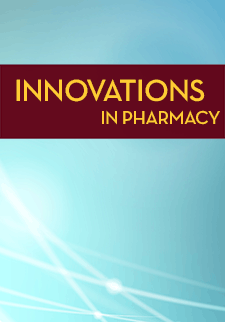Continuous Glucose Monitoring for Underserved and Minority Patients with Type 2 Diabetes in an Interprofessional Internal Medicine Clinic
Arden Bui
University of North Carolina Eshelman School of Pharmacy
Jennifer Kim
University of North Carolina Eshelman School of Pharmacy; Moses Cone Internal Medicine Clinic, Cone Health
DOI: https://doi.org/10.24926/iip.v11i4.3501
Keywords: Interprofessional, continuous glucose monitoring,, diabetes, pharmacy education
Abstract
Objective: Evaluate the impact of interprofessional continuous glucose monitoring (CGM) on glycemic control in underserved and minority patients with type 2 diabetes mellitus (T2DM)
Methods: The IRB-approved, retrospective quasi-experimental study was conducted between August 2018 and August 2019 at an internal medicine residency clinic. Adult patients with diagnosed T2DM, an indication for CGM (hyperglycemia, hypoglycemia, and/or glycemic variability), and at least 10 consecutive days of CGM data were included. Patients who were pregnant and/or missed one or more clinic appointments were excluded. Patients were followed weekly over a 14-day period during which data from the CGM sensor were downloaded and interpreted by the interprofessional team. Interventions with shared decision-making were made at each visit.
Results: Fifty-five patients were included, with a mean age of 61+11.2 years, 86% were of non-white race, and 56% were female. Average blood glucose levels decreased from 208.39 mg/dL at week 1 to 190.74 mg/dL at week 2, a 17.65 mg/dL reduction (p = 0.0281). Time within target range (70-180 mg/dL) increased by 6.16% (p = 0.0038), while time above range (>180 mg/dL) decreased by 5.5% (p = 0.0168). Average number of hypoglycemic events (readings <70 mg/dL) did not change significantly from week 1 to week 2 (2.94 vs. 3.64, p > 0.05). Of the 66 interventions made after week 1, 33% were made by the pharmacy team, 56% were made by the attending or resident physicians, and 11% were made by the dietician. Of 59 interventions made after week 2, 32% were made by the pharmacy team, 49% were made by the attending or resident physicians, and 19% were made by the dietician.
Conclusions: The interprofessional collaborative CGM service was associated with improvements in glucose control based on increased time within target range and reduced hyperglycemia, without increasing the risk of hypoglycemia or medication burden.



